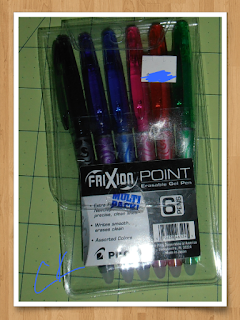Alright one of the most useful tools in a seamstress’s
arsenal, (and one of the least likely to work) is sewers chalk. There are a few
varieties which you can by, all with their uses.
The first is paper, and wheel. Only been around at least
since the 1950s (I have some of my grandma’s I can date to around then) it is
used to transfer patterns on to cloth. It can help you mark where darts are or
where sleeves are to be placed. This of course only works if you remember to
make the marks before you remove you pattern. The paper only works though if
you have a spiked wheel that you run over the pattern to transfer the chalk.
Then there is actual tailors chalk, commonly found and
sometimes useless. I have had many that just would not mark well. Usually in a
block/square form they tend to come in three colors, white, blue and yellow.
This is the oldest version.
Next you have one I came across a few years ago and it is
the one I use most often. It is a refillable pen made by clover, you fill it
with the chalk color you need, (yellow, blue or white) and then little nibs
that roll transfer whatever you are drawing on to the
cloth.
Of course there are also pencils. Simple, cheap and look like this.
cloth.
Of course there are also pencils. Simple, cheap and look like this.
The other one I use a lot is friXion Point erasable Gel
Pens. They erase easy, dispear with heat so if you forget to remove it before
you iron it no worries. They also come in six colors so no matter what I am
doing I am not worried that it might not work.
Useful tools for useful trade… The secret have as many as you can in different colors makes the work easier.















